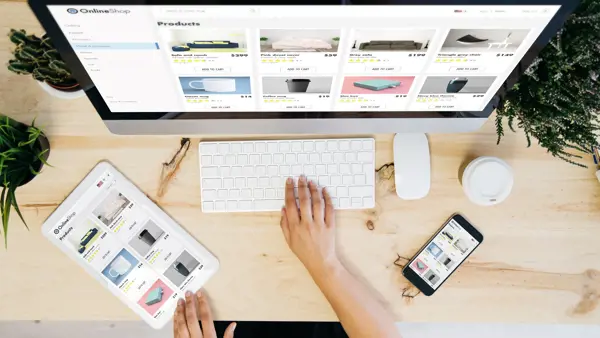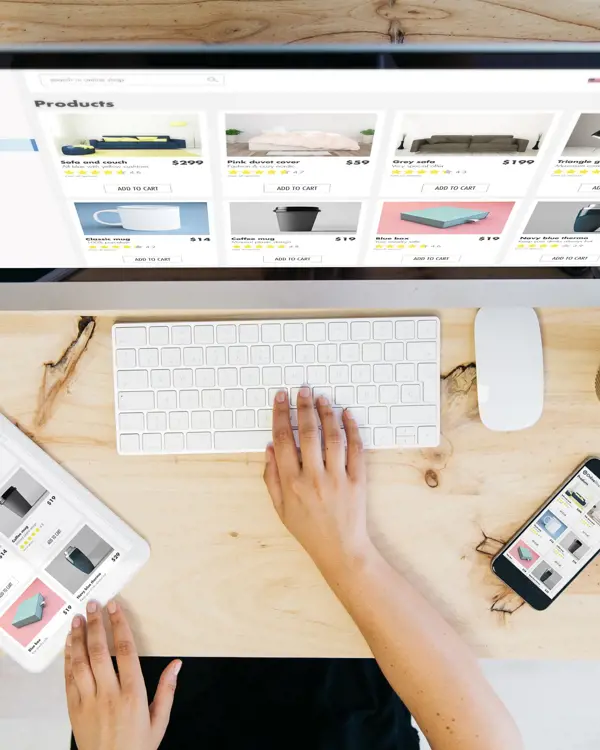Offering the store of 2025
Customers shop at any time, wherever they are, unrestricted by the limitations of a physical store. They don’t even want to differentiate between different channels they use. Preparing for this type of shopping means challenging yourself. To dive into your current business strategy and assess whether it will truly deliver on a seamless customer shopping experience. Is there any part of the journey that needs to be optimised?
Automation to create competitive advantage
Using automation means finding a balance between cost
saving and redeployment. It will save time and money by automating repetitive tasks normally performed by staff, leaving them open to be redeployed to other tasks that add more value to the organisation, such as loyalty building activities. Let them interact with customers to help build customer and brand loyalty. The extra time spent with the customers also helps your staff to identify and utilise upsell opportunities. This increased customer engagement is a vital component of ensuring the brand’s USPs and it prevents the brand from becoming indistinguishable from competitors.
Take self-service checkouts as an example. Human cashiers provide an interaction and full-service experience for the customer that self-service checkout cannot. However, as factors such as health have become an increasingly larger concern, providing strong self checkout options alongside your cashiers could directly affect how many customers visit your store. Raydiant found that 59.8% of the respondents said they prefer self-checkout. Not only that, 49.4% of the respondents stated they are more likely to visit a store with a self-checkout option over one that does not, all other things being equal. So not only do customers like the convenience of self-checkout, this technology can also determine whether a customer chooses to shop with you or not.
Seamless customer shopping experiences
Customers want a seamless shopping experience, irrespective of which channels they use and interact with. Whether they are looking on your website and social media or are in your physical store. Having a seamless shopping experience means having the same brand experience, customer service, and access to information they are looking for wherever they are shopping at that time. Whether it is being able to access your (online) orders wherever you are, finding information on collection, ordering and returning, or deciding when, how and where your products will be delivered.
So, how can physical stores remain relevant in the future? The average customer may choose when and how to shop based on convenience. However, this is not the full story. The experience customers have in your store will decide whether they will be returning to you. The personal touch provided in stores such as curated product offers from the staff based on customer knowledge to the experience.
Convenience
A seamless shopping experience is a highly visible way to create convenience for your customers. But, there are also some other, less obvious options available. Think of offering the customer the possibility of selecting a range of products online at home to try on in the store at a time and place of their choosing. The changing room will be booked, the items will be waiting for them and the staff are ready to assist. Or as in the cosmetics industry, use digital technology to simulate different hair colours, nail varnishes, and make-up shades on the customer to help them find the products they want in the shade that suits them best.
The Jo Malone interactive display is a great example of combining in-store experience with online service. The display uses a visual language to understand the scents they are smelling and identify complimentary fragrances for exploration. This display gives the customer convenience whilst also adding a brand experience they will not soon forget.

Personalised and relevant customer engagement
Why all this talk about data? It is a collective term that could mean a myriad of things and oftentimes will be glazed over quickly. However, you cannot achieve personalisation without having data on your customers shopping behaviour. The products they looked at, bought or didn’t buy, added to their basket or not. Collecting this data is simpler to do online, but it is vital in physical stores too. The same questions apply, but in the physical setting. Did the customer pick it up from the shelf? Did they buy it or put it back? Think of the Jo Malone example and how much data you could collect from that display. Other data you want to collect is on queues. How long were they, were the self-service checkouts available and did customers use them? With the use of monitors and AI, you can identify potential queues early and prompt action to open more checkouts.
So, the data you want to collect is clear, the question is where to store it. You want it to be in the cloud and connectable. When will you invest in data lakes, if you only have a data warehouse at the moment? With data lakes, data from various sources are collected to provide you with rich analyses.
The future is an exciting place, with the metaverse, NFTs, cryptocurrency, AI and so on. Which changes and innovations you should pursue depends on your business. Weigh them between what is headline grabbing and what is value adding for your business. In reality, how many customers actually have cryptocurrency to spend? Or how many know what NFT stands for, let alone want one? It is important to always check back with what is important for the customer. That is to have a shopping experience tailored in the seamless world with personalised shopping engagements.
Looking to learn how HSO For Retail can help you?
Leave your contact details here and we will get back to you as soon as we can.


